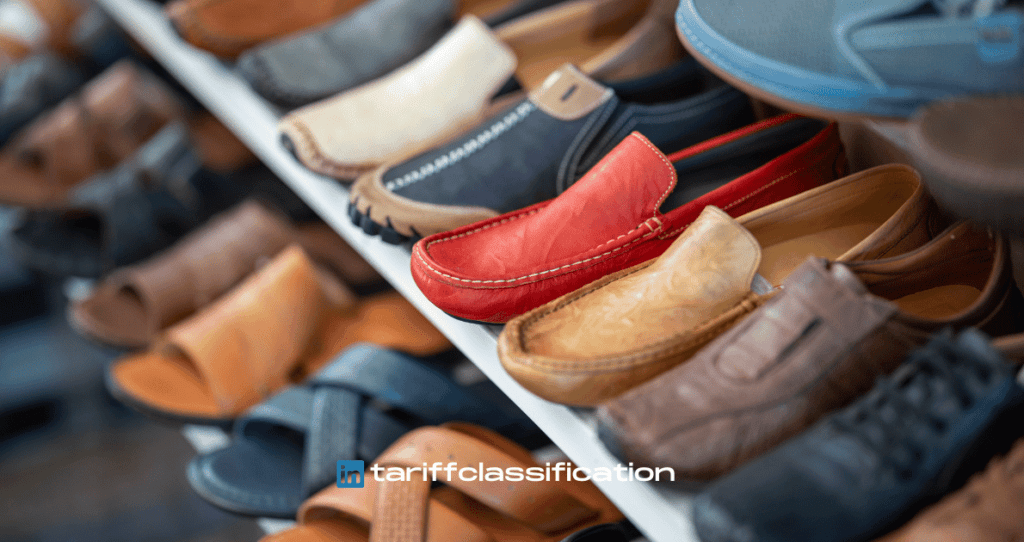If you are in the business of importing or exporting footwear, then you need to understand how to properly classify it for tariffs. This article will explain how to do tariff classification for footwear, so that you can save yourself time and money when dealing with customs.
The Harmonized Tariff Schedule of the United States (HTSUS) classifies footwear under Chapter 64. Footwear is classified based on two factors: the identification of the component material comprising the greatest external surface area of the upper and the external surface area of the outer sole. The classification of footwear depends on the material from which it is made and the type of shoe.
For example, leather and textile upper material are classified under Chapter 64. Footwear with plastic or rubber uppers are classified under the heading for “plastic or rubber footwear”, while footwear with vulcanized rubber or leather uppers are classified under the heading “vulcanized rubber or leather footwear”. The classification of footwear with plastic or rubber outer soles depends on the type of shoe. Athletic shoes, for example, are classified under the heading for “plastic or rubber athletic footwear”, while shoes with rubber or plastic soles, but no upper material, are classified under the heading for “plastic or rubber soles”.
Identify the type of footwear.
The first step in tariff classification for footwear is to identify the type of footwear you are dealing with. Footwear can be classified into three categories: protective, casual, and dress. Protective footwear includes items such as safety boots, work boots, and steel-toed shoes. Casual footwear includes items such as sneakers, sandals, and flip-flops. Dress footwear includes items such as dress shoes, heels, and dress sandals.
Once you have identified the type of footwear you are dealing with, you will need to determine the appropriate Harmonized System (HS) code for the item. The HS code is a six-digit code that is used to classify goods for international trade. It is important to use the correct HS code, as this will ensure that you pay the correct tariffs.
Determine the material.
The next step is to determine the specific material of the footwear you are dealing with. Most footwear is made from either leather or rubber, so you will need to determine which material is used in the item you are dealing with. Leather footwear will typically have an HS code of 6401 while rubber footwear will typically have an HS code of 6402.
In some cases, the upper may also extend to the sole, depending on the type of shoe. This is common in plastic molded footwear or moccasins, where the sole and part, or all, of the upper is made from a single piece of material. In this case, the upper serves as both the protective outer layer and the supportive sole.
Upper material can vary greatly depending on the type of shoe and its intended purpose. Common materials used in the construction of uppers include leather, canvas, synthetic materials, and mesh. These materials are often used in combination with each other to create a unique look and feel.
The upper plays an important role in the overall comfort and performance of the shoe. It provides cushioning, support, and breathability, allowing the foot to stay comfortable while in motion. Additionally, the upper helps to provide protection to the foot and keep it dry, particularly in wet or muddy conditions. It also helps to reduce friction between the foot and the ground, which can help to prevent blisters and other common foot injuries.
Documentation and duty.
Finally, you will need to determine the origin of the footwear. This is important because different countries have different tariffs and duty rates for imported goods. The origin of the footwear will be determined by where it was made and where it was shipped from.
By following these steps, you should be able to easily determine the proper tariff classification for footwear. Understanding how to do tariff classification for footwear can save you time and money when dealing with customs. It is important to ensure you are using the correct HS codes and origin information, as this will ensure that you pay the correct tariffs.
